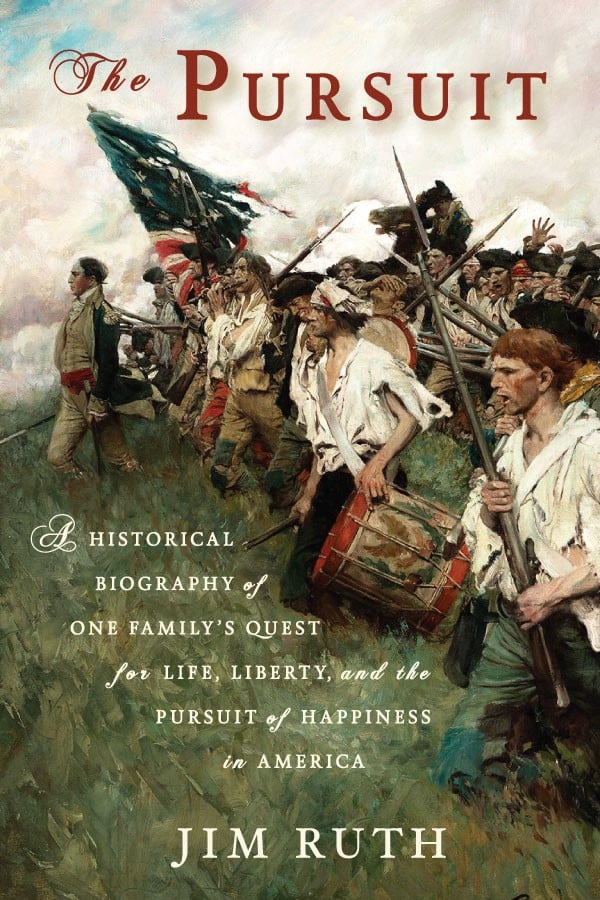
On SALE Now:
Amazon, Barnes & Noble,
and other fine booksellers
The Pursuit is a sweeping historical biography of one family's quest for "life, liberty, and the pursuit of happiness" over nearly 300 years in America. The Ruth family’s story is American History 101—told through first-hand accounts by those who were there. Stitched together like a hand-crafted quilt, each chapter recounts dramatic tales of courage, loss, and achievement.
After braving a harrowing voyage across the Atlantic Ocean in 1733, the Ruths transformed Pennsylvania forests into farmland and endured Indian attacks during the French and Indian War. Their children and grandchildren shed their blood fighting for America’s independence in the Revolution. In the Civil War, the family again made sacrificial offerings to save the Union and free enslaved people.
Beyond the battlefield, pioneering Ruths helped settle America’s heartland, pushing the country’s boundaries farther west toward the Pacific. On a global stage, one ancestor won the Nobel Peace Prize, while other family patriots died fighting on foreign soil in both World Wars.
The Pursuit chronicles how the Ruths journeyed great distances and overcame daunting obstacles. It reveals the sorrows they suffered, the joys they celebrated, and the occupations they pursued. This intimate portrait of one family’s story is a must-read for anyone who wants an eyewitness view of authentic American history.
Over 250 footnotes support citations.
(Book cover: Howard Pyle, The Nation Makers, 1906, oil on canvas)
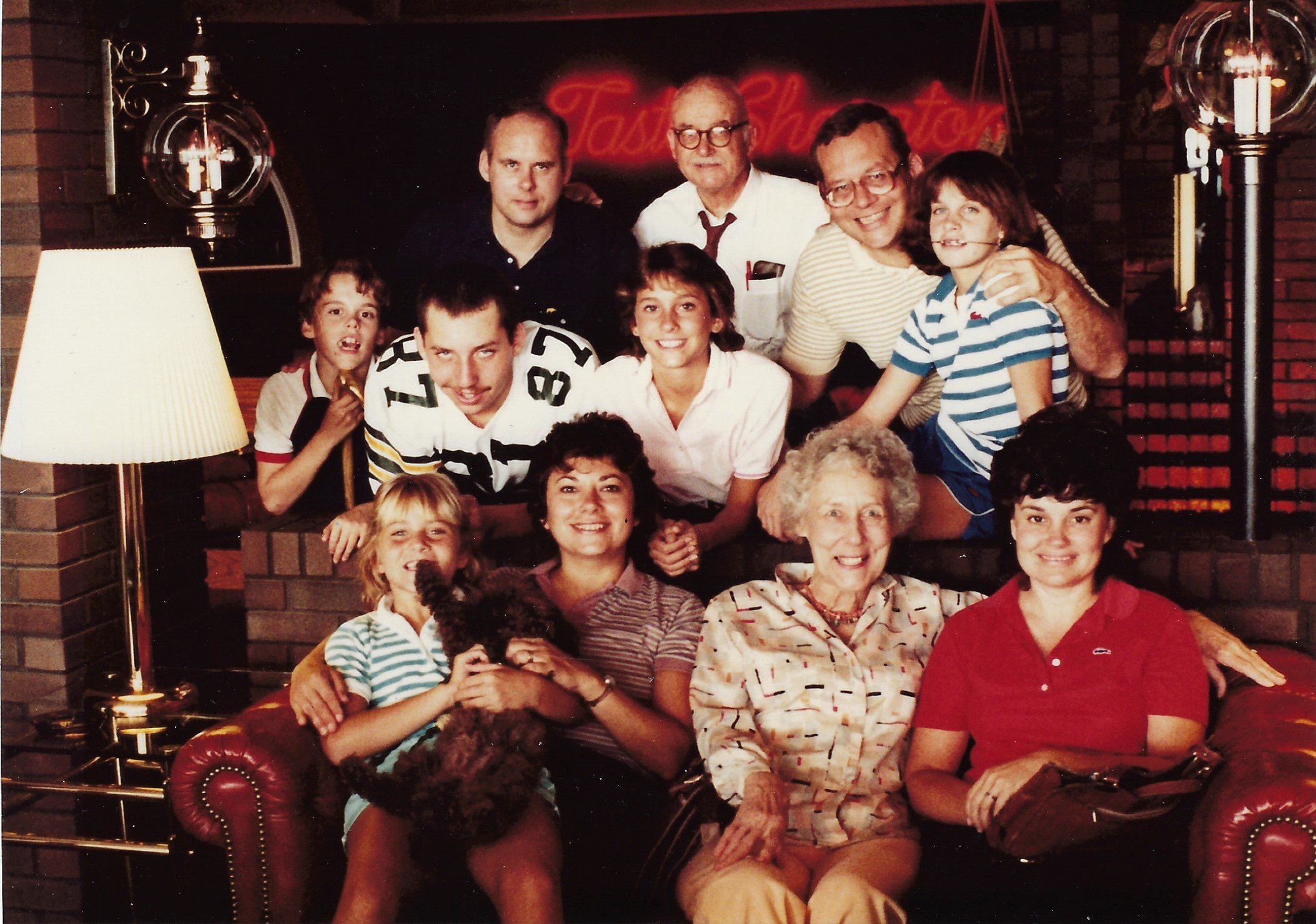
1983
Chapter 1:
The Reunion
It’s 1983, and the Ruth clan gathered in Sinking Spring, Pennsylvania, to celebrate Peter Ruth’s coming to America. Over 100 cousins gather for the festivities, coming from as far away as California and Florida—15 states in all. The weekend surrounding the 18th of September was chosen to coincide with Peter’s landing in Philadelphia on that day 250 years earlier.
Among the amazing family discoveries that weekend was finding the original stone home Peter built soon after the French and Indian War. Another highlight was visiting the graves of Ruth ancestors who fought in the Revolution. Then, there was the pleasant surprise of discovering a Nobel Peace Prize recipient was in my ancestral line.
Those and other memories of the 1983 reunion lay dormant, marinating in my thoughts for nearly 40 years. Then, a spiritual awakening on the beach at Lewes, Delaware, in 2020 brought it all back. Recollections of the reunion are revealed through family lore, historical documents, and family genealogy records.
(Photo of the Maryland and Ohio Ruths at the 1983 reunion)

1733
Chapter 2:
The Crossing - By Land and Sea
In the late spring of 1733, Peter Ruth, my 5th great-grandfather, and his young family traded the harsh certainty of 18th-century Prussian life for a chance to pursue their dreams in America. Peter, his wife Sophia, and their four young boys set out from their tiny village of Walhausen in southwestern Germany. They sailed north on the Rhine River to Rotterdam and then to England to embark on their voyage to America.
The story of their brutal 66-day voyage across the Atlantic Ocean is recounted from a letter and diary of two fellow voyagers, Provincial Council records, genealogy books, and other historical reference materials.
(Tall ship in choppy seas by Brigitte Werner via Pixabay.)
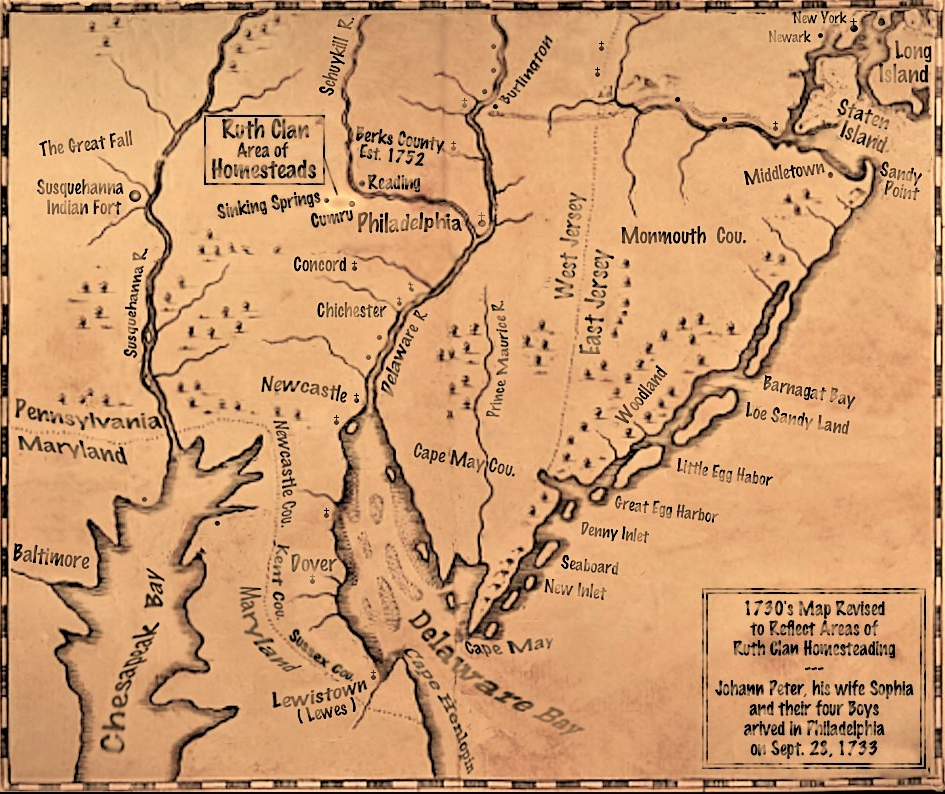
1733
Chapter 3:
Land Ho - The Delaware
From the top deck of the brigantine Pennsylvania Merchant, Peter Ruth and his wife Sophia catch their first glimpse of the North American continent. Through the hazy fog silhouetted on the horizon, they could see the port of Lewes in the English Colony of Delaware at the mouth of the Delaware Bay.
Four days later, sailing up the Delaware River, the Merchant glides with the flood tide into Philadelphia's bustling harbor. "Thanks and praise be to the Lord for this blessing!" records a voyager in his diary.
The American journey for the Ruth family—Peter, Sophia, and their four sons, Michael, Jacob, Christian, and Peter—was just beginning. A fellow passenger's diary and letter home tell the story of their first sighting of America and their landing in Philadelphia.
(Vintage map created by Peter Ruth descendant Steve Smith)
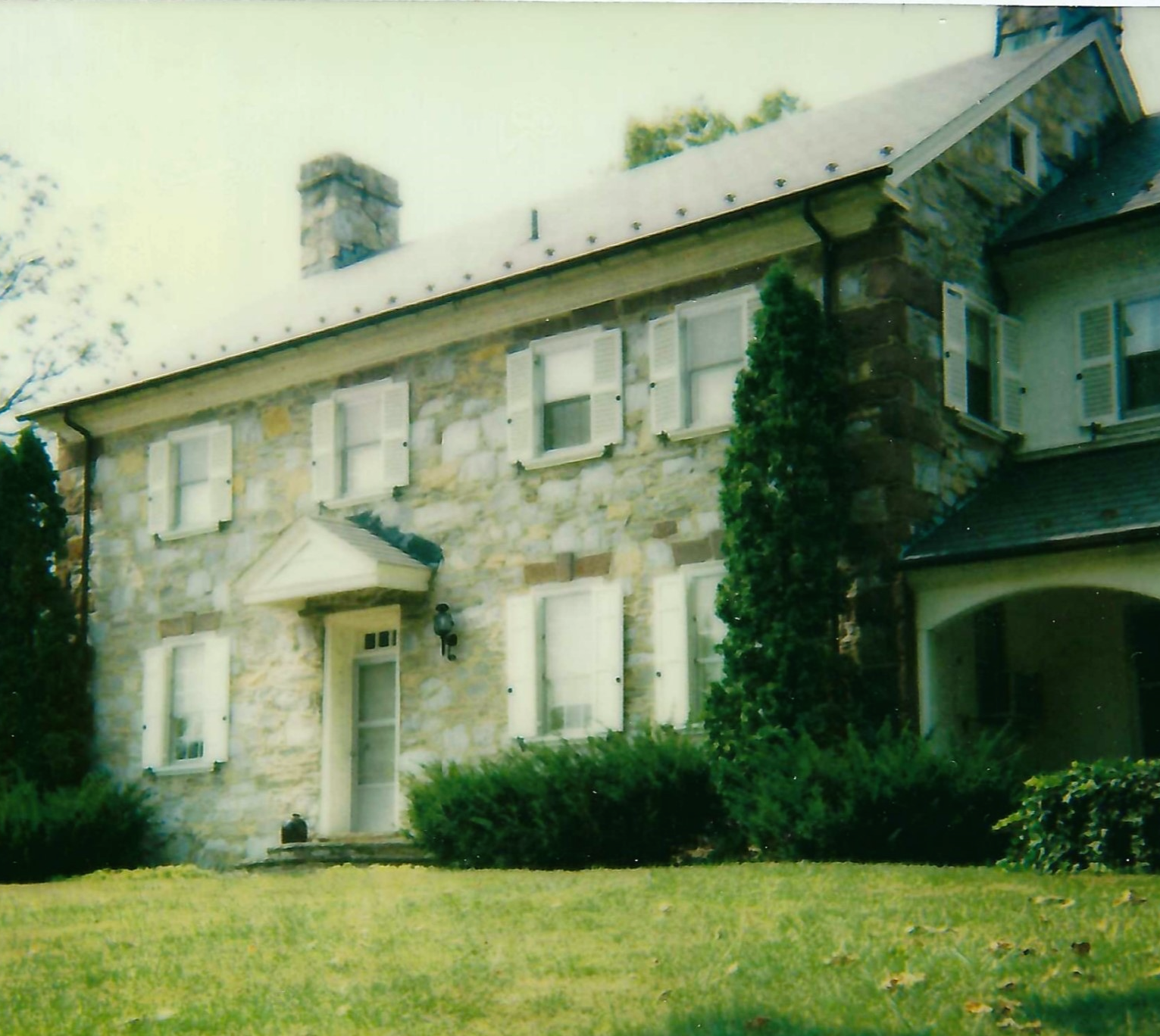
1733 - 1771
Chapter 4:
The Settling: Pennsylvania Dutch Country
Heading west to the outer edge of America’s frontier, Peter and Sophia Ruth trek out of Philadelphia with their four sons at their side. They leave behind the safety and relative comfort of the civilized part of the New World. Some 60 miles distant, their destination lay near a place called Sinking Spring in the Dutch country of Pennsylvania.
Taming virgin land in the New World requires all the skills Peter had acquired in his homeland and then some. In addition to transforming forests into farmland, he built a home for his family and hunted and planted crops to feed them. And then there were the Indians.
The Ruth's struggles and triumphs in colonial America are pieced together from wide-ranging sources, including church books and records, genealogical reference materials, Provincial Council proceedings, land records, family historical documents, and American history books. These sources give depth and authenticity, painting a vivid picture of the pioneering Ruth family.
(Stone house built by Peter Ruth between the French and Indian War and the Revolution. Photo by author, 1983)
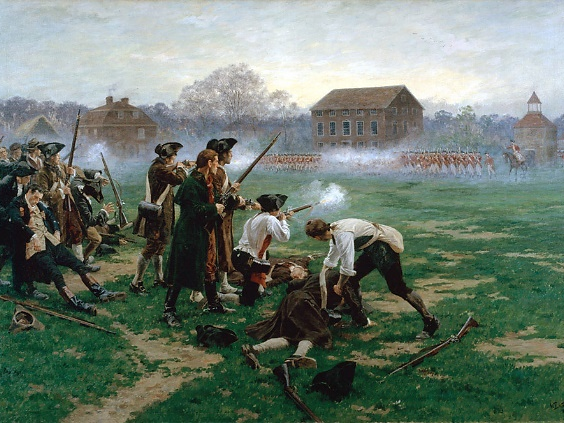
1775 -1783
Chapter 5:
The Revolution - Life, Liberty, and the Pursuit
The eight sons of Peter, Sophia, and Catharine (Peter’s second wife after Sophia's death) volunteered to fight for their country in America’s war for independence. Other family patriots answered the Lexington Alarm, clashed with British General Burgoyne at Saratoga, and battled the traitor Benedict Arnold in New London. And yet another would suffer death at the hands of his Redcoat captors.
More than 25 of my ancestors risked everything—their lives, liberty, and sacred honor—to win independence from the British Empire, the world's greatest superpower of the age.
The Pursuit reveals a tale of triumph and tragedy profiling four of these patriots. It chronicles their legacy drawing from numerous sources, including family lore, genealogy records, state militia and war department archives, and historical reference books.
(Painting depicts the Battle of Lexington in 1775 by William Barnes Wollen, 1916.)
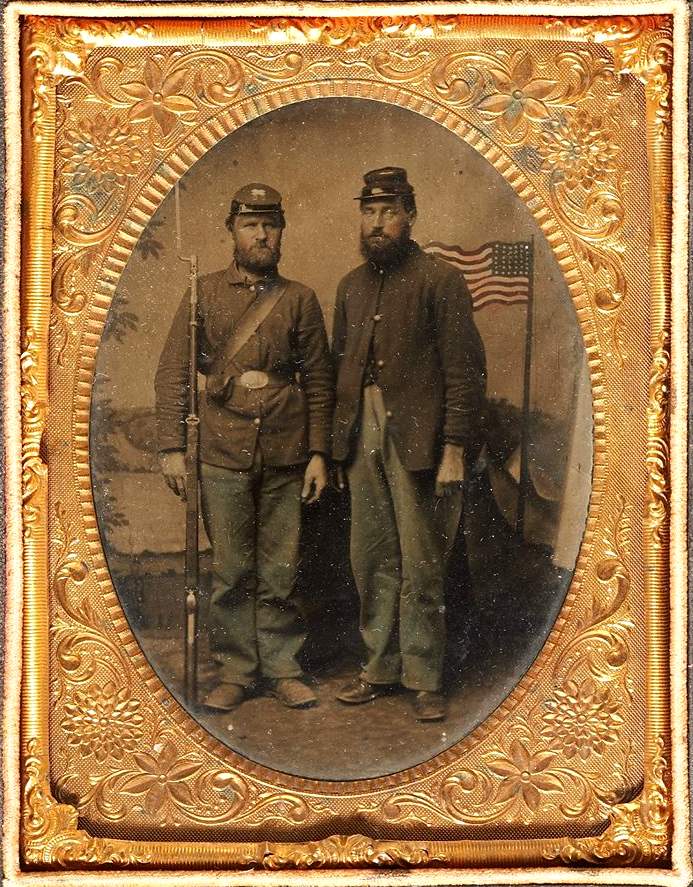
1861- 1865
Chapter 6:
The Fledgling Republic - A House Divided
America’s Civil War was a shattering internal struggle for the country’s soul. Nine of my ancestors served as privates in various Union infantry or cavalry regiments. All volunteered to help preserve the Union and abolish slavery—only four returned home to their families. Five were killed in action or died from wounds, sickness, or disease.
The courage and sacrifice of these family patriots are not lost to time. Diaries, letters, after-action battle reports, and historical reference books vividly bring them back to life, each a valuable piece of our shared family history.
(Photo believed to be Ben Ruth holding his rifle beside a fellow Union soldier. Photo from family archives.)
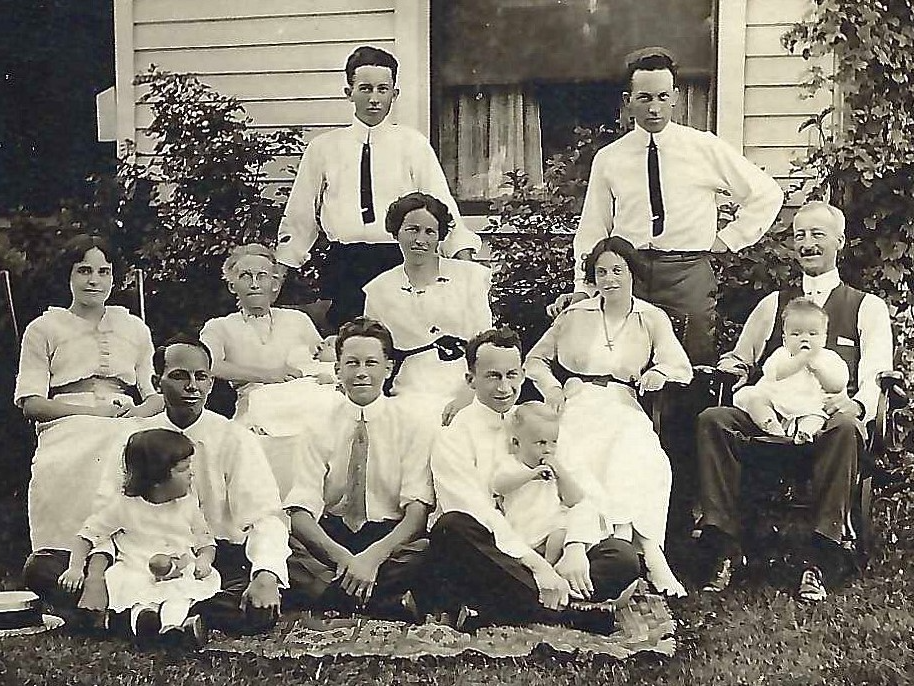
1836 - 1917
Chapter 7:
Westward Ho - To the Heartland
In the summer of 1836, rekindling the wanderlust of his grandfather Peter, George and Hannah Ruth abandoned the protective cocoon of their close-knit Pennsylvania family and ventured west to America's frontier.
The Ruth family's arduous two-month-plus pilgrimage, spanning 900 miles into the Dakota Territory, is brought to life through a diverse array of sources. These include family reunion records, genealogical reference books, county, city, and state archives, land grant records, newspaper accounts, and historical society records, each contributing a unique piece to our family's historical puzzle.
(Pictured is the Reuben Ruth family of Mitchell, SD - Circa 1914)

1917 & 1941
Chapter 8:
The World Wars - More Sacrifices on the Altar of Freedom.
Fifty-two years after the Civil War, Peter Ruth's descendants were called to a faraway continent on the other side of an ocean—this time to help save the soul of the world. Just as they had done in the Revolution and the Civil War, the Ruths again shed their blood, answering their country’s call to arms. The story of three family patriots is told in this chapter.
During WWI, Peter Ruth's 3rd great-grandson is killed in action charging a German machine gun in the Chipilly Woods in France, while two of his cousins are attacked with mustard gas near the city of Dugny. Both brothers survive their wounds, each earning a Purple Heart.
Numerous family patriots served during WWII. One was killed in action by wounds received six weeks after the Normandy invasion, and another evaded capture by the Germans after his B-24 bomber was shot down over Belgium.
The stories of these family patriots are told through a diary, oral family history, military records, newspaper accounts, reunion proceedings, historical society archives, and family genealogical records.
(Photo of Linus C. Ruth, age 17. Circa 1909)
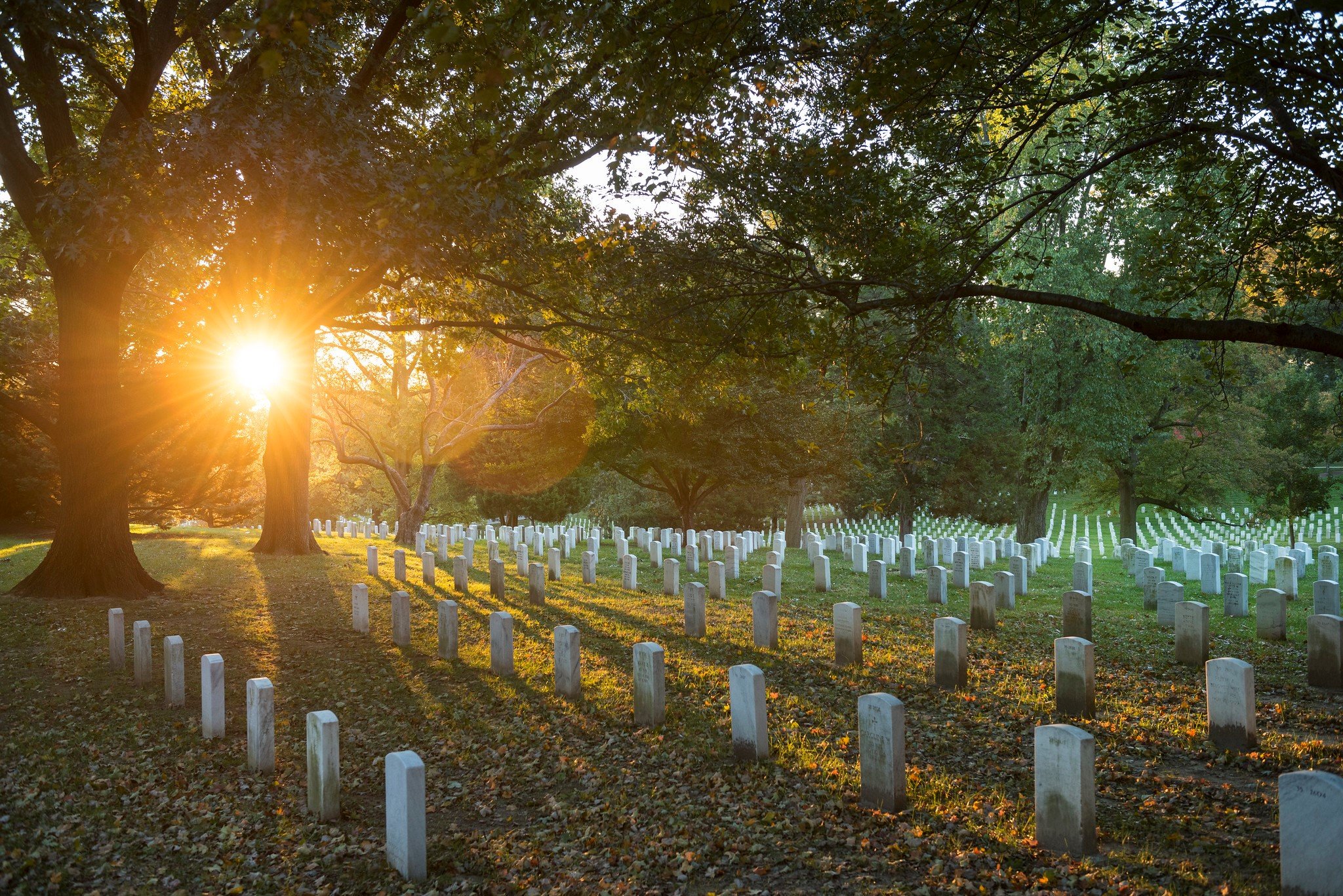
1936 - 2024
Chapter 9:
The Beautiful City of the Dead - Arlington
My earliest memory of our family tradition at Arlington was on Memorial Day, 1951 when I was a curly-haired five-year-old. I remember my eight-year-old brother Bobby chasing me through the maze of white marble headstones. At that age, the decorum of hallowed ground surrenders to the joy of being a little kid.
In those early days, our annual family pilgrimage to Arlington National Cemetery was to visit the graves of my two grandfathers. Over the ensuing years, six more members of my family joined them there. All were just freedom-loving Americans who answered their country’s call to arms.
Now in my seventy-eighth year, I continue the pilgrimages to Arlington National Cemetery to rekindle memories of an airman, a sailor, two soldiers, and their dutiful wives who kept the home fires burning. All eight served our country with honor.
Numerous letters, newspaper articles, military and historical records, and genealogy books and documents tell the story of these eight family patriots.
(Photo courtesy of ANC from their website)